During the long hot summer of 2022, my wife got hooked on the idea of learning to Wing Foil. After she had taken a couple of lessons, I was encouraged to give it a go.
I should say that I am a fairly fit 60 year old who can swim 2K in 35 mins and who spends lots of my spare time doing core workouts and bike rides. I am fairly accomplished small dinghy sailor and can understand the wind, although the last time I stood on a windsurfer was 40 years ago and I would not say I was a natural, I only managed to keep on the board by using the wind to help balance me.
Sarah had purchase a beginner set up a 115 Litre board and a 2000cm foil, 85cm mast and a some wings - 4sqm, 5sqm and 6sqm so while Sarah went out practicing, I made up a dagger board out of a sheet of ply and strapped it to the bottom of a SUP and spent a fun afternoon with her spare wing, trying to make the SUP sail to windward. My walk of shame upwind gradually got smaller. My roughly constructed daggerboard was not ideal but it helped me make a start. In hindsight, I should have purchased a Foiling World daggerboard, designed specifically for adapting a SUP to learn to Wing. Rob Andrews' design looks much sleeker and more efficient than mine.
My next outing was a short try of the real thing, Sarah's 115L board. It is meant to be a beginner board for someone of 70Kg, but it felt like I was standing on a office swivel chair. I spent a lot of time swimming and there was no danger of it begging to foil, however I was still keen to learn.
Sarah was by now regularly foiling so we booked a warm winter break to crack it. Boa Vista in Cape Verde is not an ideal venue, but it was warm and the trade winds are more consistent during December.
The wind was offshore - and despite Planet Allsports indicating that they would run a shuttle to get up back upwind in early correspondence, when we arrived they played hard ball and said they would not hire us equipment if we could not make good distance to windward and back to the beach. Was this a ploy to get more cash for running supported lessons? You might think that - but I could not possibly comment. Needless to say we took some more lessons so we had the freedom of bearing away and trying to foil (mostly falling off - but at least we tried)
After 6 days, 4 hours a day of taxiing on my knees, standing, starting to foil falling off and starting all over again, I was pretty broken, but I was hooked. I was sooo glad that I had taken some Rooster Knee pads to protect my knees and shins from the foil and the board. I even wore the junior knee pads on my arms to stop the bruising as I was forever climbing back on the board.
. The conditions were not idea and I did spend long periods on my knees waiting for enough wind to pump myself to my feet. I also see the experts on their sinker boards giving their knees a real workout as they have to pump hard from their knees whilst on their sinking board to get to their their feet. Perhaps they should try Rooster Knee pads. I compared the gear we used to that used by Wing Foilers and I must say that I was proud to wear the Rooster Thermaflex® 1.5mm Chest-Zip Wetsuit. Conceived to withstand the aggressive wear environment of dinghy sailing makes them super durable for Wing Foiling.
By the end of the holiday Sarah was very competently foiling on both tacks whereas I was foiling fairly successfully on port but not on Starboard. I think I had too many bad crashes on Starboard - and so I lent back too much - which then becomes an ever increasing crash spiral. We were also both 1Kg lighter than before Christmas. It was certainly a workout!
We quickly found some second hand kit on Facebook marketplace. We are now the proud owner of a 105L board with a 1900 wing. I am 70Kg so that is 35Kg of positive buoyancy, although a bigger volume would be more stable. Your mast height (the mast is the bit between your foil and the board) should be shorter for beginners to reduce the size of the crash - but longer if you are foiling regularly in waves. Also a shorter mast will help those foiling in restricted shallow water.
The one technique that I must work on is the ability to pump the wing and board. It's key to being able to use a smaller board and foil and foil in lighter winds. Smaller foils are faster which helps them carry you though the gybes but are also harder to get to fly. A smaller board makes for a more agile ride but is tricky to stand on and taxi before you are foiling. To help me progress, I think I should take a wing to the beach and do some pumping practice.
There are some great pumping videos on You Tube - but the best I have seen is this one: https://www.youtube.com/watch?v=J1N7YVawe9g
I also managed to get a 4sqm and a 5sqm wing from Foiling World Ltd, again very reasonably priced and well made. People tend to hold onto their wings and sell their foils and boards as they upgrade to smaller foils and lower volumes on the board. As I will be an evening 'wing foiler', I imagine a board with some positive buoyancy will remain my preference so I can taxi home on when the wind dies.
I have managed to make it out in January armed with some hot legs and hot top together with an Aquafleece® Neck Gaiter and a Supertherm Beanie to boost my Rooster Supertherm Steamer. We had much better wind and conditions than Boa Vista - just the water at Hill Head was a little colder - and more importantly I managed to foil consistently on both tacks - whoppie!!
The Rooster Race Armour Buoyancy Aid doubles as an impact vest was ideal, although I took a size smaller than what I normally wear dinghy sailing as it felt more secure.
I used a pair of Small Rooster Knee Pads on my knees and a pair of junior knee pads on my arms as I am still climbing on the board a lot!
I also wore a Rooster Helmet which despite it not being ISO approved - it was very reassuring and offered plenty of protection when crashing. We are looking forward to those long sunny evenings on the South Coast when we can spend an hour or two having fun flying.




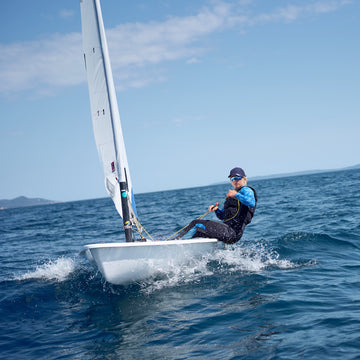
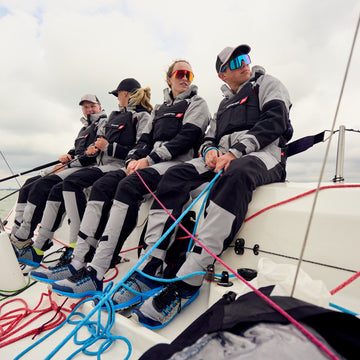



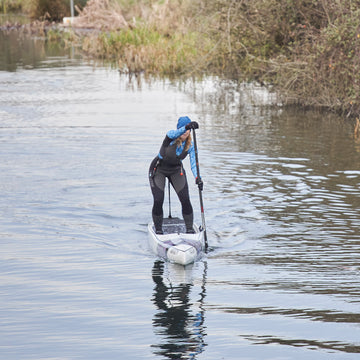
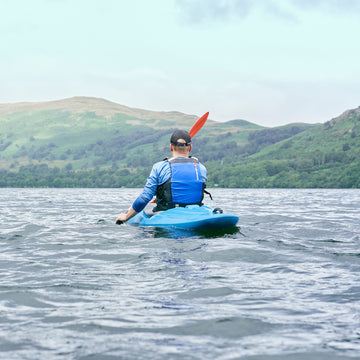
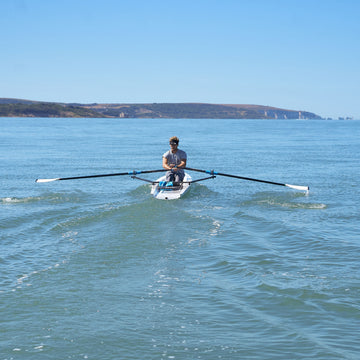
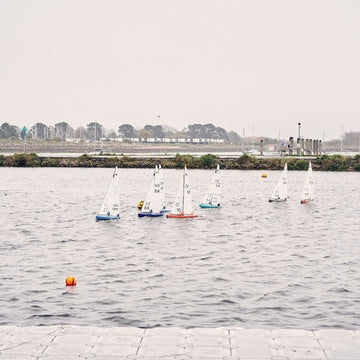








 Select Store
Select Store
 EU
EU
 US
US
